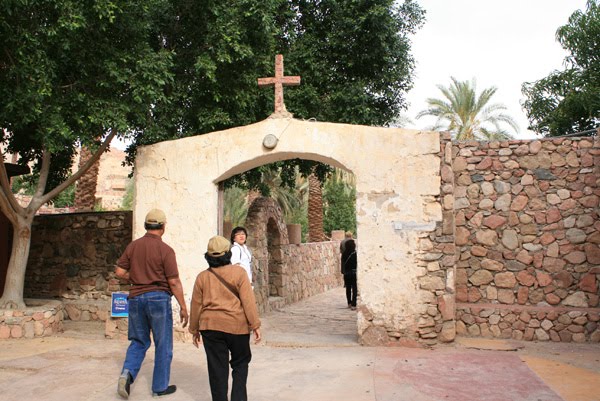I just came across a story about the fourth-century codex (ancient form of book, made from leathers) of the Greek Bible known as Codex Sinaiticus. It is the only known complete copy of the Greek New Testament in uncial (capital letter) script. As Metzger puts it, "The story of its discovery makes a fascinating tale". Here are some excerpts of the story quoted from Metzger's book:
In 1844, a man name Tischendorf travelled through the Near East in search of Biblical manuscripts. While visiting the monastery of St. Catharine at Mount Sinai, he chanced to see some leaves of parchment (leather that was used as paper) in a waste basket full of papers that would be thrown to the oven of the monastery. He found them to be part of a copy of the Septuagint version of the Old Testament (Greek translation of the Old Testament, already circulated widely in the time of Jesus). The monk there casually remarked that two baskets of similar things had already burned up! Tischendord was then allowed to take them to Europe and published their contents in 1846.
In 1853 Tischendorf revisited the monastery of St. Catharine, hoping to find other portions of the manuscript, but he found nothing because the monks did not want to tell him anything more.
In 1859, under the patronage of Czar of Russia, he travelled back to the monastery. The day before he wanted to leave, he showed to the steward of the monastery a copy of the edition which he had published. The steward said that he also had a copy of the Septuagint and he showed it to Tischendorf. That is the treasure that Tischendorf had been longing to see! Hiding his excitement, he asked permission to look at it further that evening. Permission was granted, and Tischendorf spent the whole night studying it.
The next morning he tried to buy it but with no success. He asked to be allowed to take it to Cairo to study, but he was not allowed to do so either. Yet later in Cairo, he happened to meet the abbot of the monastery of St. Catharine who was then agreed to send the the codex to Cairo, part by part. Tischendorf and his two friends then carefully transcribed the manuscript.
At that time the highest place of authority among the monks of Sinai was vaccant. Tischendorf suggested that it would be to their advantage if they would make a gift to the Czar of Russia. They need the influence of the Czar of Russia, who stood as protector of the Greek Church. And what could be more appropriate as a gift than this ancient Greek manuscript! And finally it was delivered to Russia. In return for the codex, the Czar presented to the monastery a silver shrine for St. Catharine, a gift of money for the library at Sinai and for the monks in Cairo and conferred several Russion decorations (similar to honorary degrees) on the authorities of the monastery. In 1862, on the one-thousandth anniversary of the founding of the Russian empire, the text of the manuscript was published.
After the revolution in Russia, the USSR, not being interested in the Bible and being in need of money, negotiated with the Trustees of the British Museum for the sale of the codex for more than $500,000. The British government guaranteed one-half of the sum, while the other half was raised by contributions by interested Americans as well as individuals and congregations throughout Britain. Just before Christmas day, 1933, the codex was carried into the British Museum.
This story surprised me. The codex was discovered at the monastery of St. Catharine on Mount Sinai. I was there last year and I even delivered a sermon there to my Indonesian group. I still remember that it was the day of Pentecost, so I preached about the works of the Holy Spirit.
I was totally ignorant that it is such an important place (some other ancient manuscripts were also found there). I sometimes said that Indonesian tourists are bad tourists because they go to a place without knowing anything about it. In this case, 'bad tourist' also applies to me. I hope someday I can go there again and appreciate the monastery even more for its historical treasure that had contributed to the translation of our modern Bible. The discovery itself was also the work of the Holy Spirit!
One of the corner of the room that we used for worship that day.
These stones date back to the fourth century!



